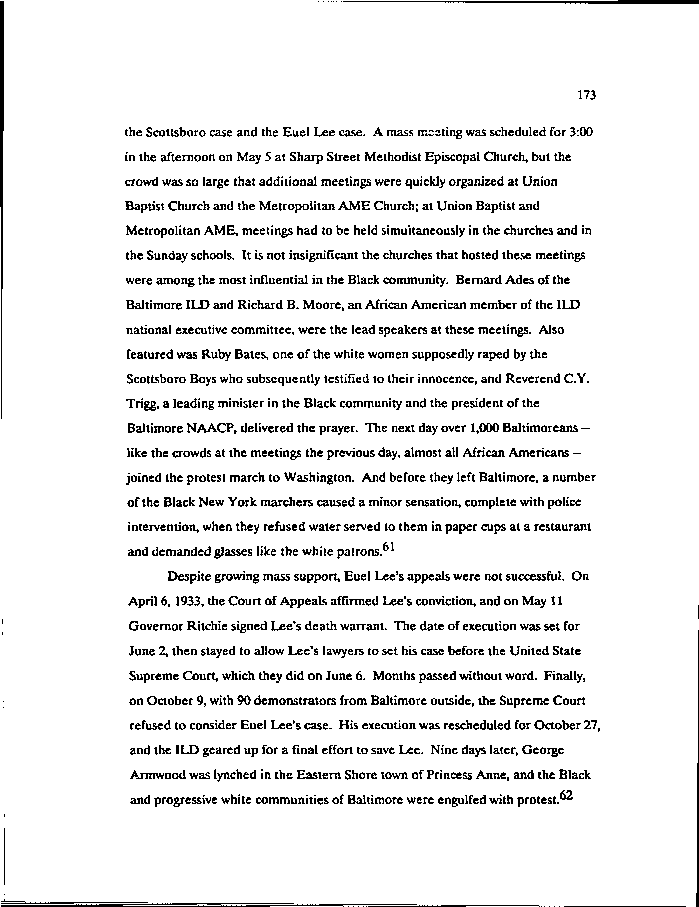|
173
the Scottsboro case and the Euel Lee case. A mass meeting was scheduled for 3:00
in the afternoon on May 5 at Sharp Street Methodist Episcopal Church, but the
crowd was so large that additional meetings were quickly organized at Union
Baptist Church and the Metropolitan AME Church; at Union Baptist and
Metropolitan AME, meetings had to be held simultaneously in the churches and in
the Sunday schools. It is not insignificant the churches that hosted these meetings
were among the most influential in the Black community. Bernard Ades of the
Baltimore ILD and Richard B. Moore, an African American member of the ILD
national executive committee, were the lead speakers at these meetings. Also
featured was Ruby Bates, one of the white women supposedly raped by the
Scottsboro Boys who subsequently testified to their innocence, and Reverend C.Y.
Trigg, a leading minister in the Black community and the president of the
Baltimore NAACP, delivered the prayer. The next day over 1,000 Baltimoreans -
like the crowds at the meetings the previous day, almost all African Americans -
joined the protest march to Washington. And before they left Baltimore, a number
of the Black New York marchers caused a minor sensation, complete with police
intervention, when they refused water served to them in paper cups at a restaurant
and demanded glasses like the white patrons.
Despite growing mass support, Euel Lee's appeals were not successful. On
April 6,1933, the Court of Appeals affirmed Lee's conviction, and on May 11
Governor Ritchie signed Lee's death warrant. The date of execution was set for
June 2, then stayed to allow Lee's lawyers to set his case before the United State
Supreme Court, which they did on June 6. Months passed without word. Finally,
on October 9, with 90 demonstrators from Baltimore outside, the Supreme Court
refused to consider Euel Lee's case. His execution was rescheduled for October 27,
and the ILD geared up for a final effort to save Lee. Nine days later, George
Armwood was lynched in the Eastern Shore town of Princess Anne, and the Black
and progressive white communities of Baltimore were engulfed with protest."^
|

